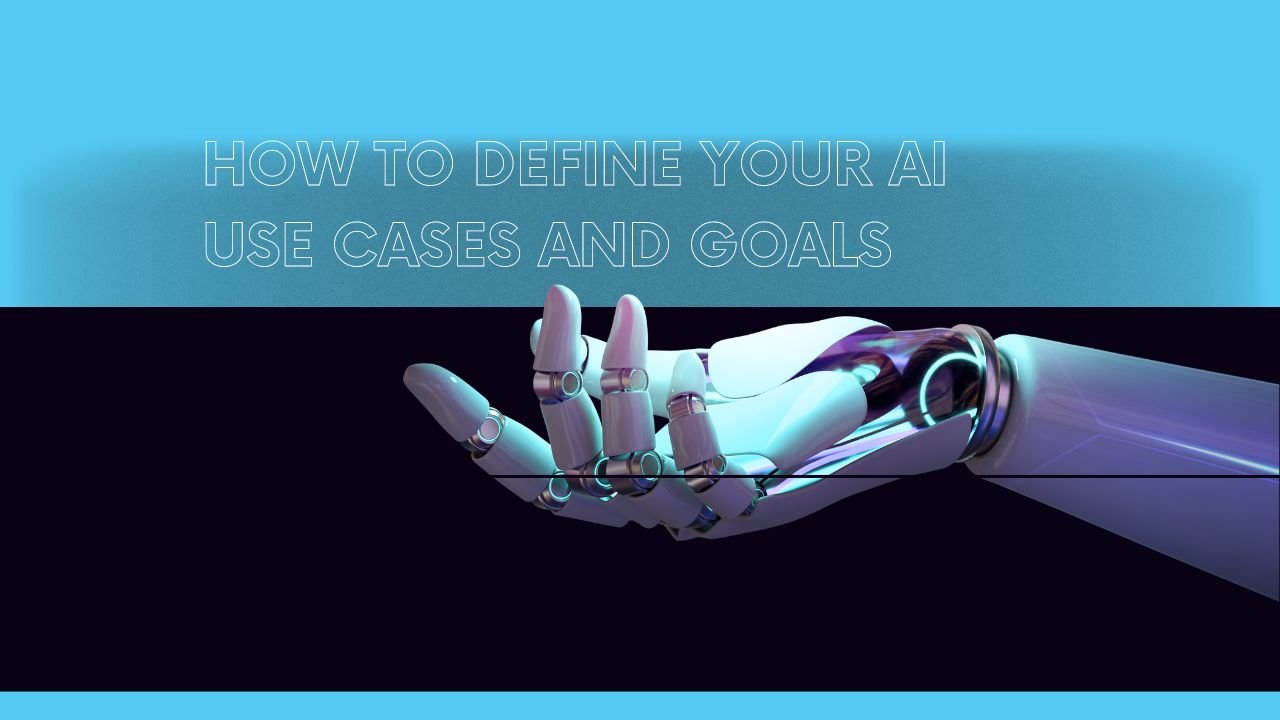Artificial intelligence (AI) technology is the ability of machines to perform tasks that normally require human intelligence, such as perception, reasoning, learning, decision making and problem solving. AI technology can offer many benefits to organizations, such as improving productivity and efficiency, enhancing creativity and innovation, increasing flexibility and convenience, improving learning and development, enhancing safety and security, and creating new products, services and business models. However, AI technology can also pose some challenges, such as requiring significant investments in technology, skills and resources, raising ethical or social issues, causing technical or operational issues, and creating legal or regulatory issues. Therefore, it is important to define your AI use cases and goals before implementing AI technology in your organization. Here are some steps to help you define your AI use cases and goals:
- Start with a concrete question: The first step in defining your AI use case is to get clear on the specific question you want AI to answer. This question should be aligned with your business strategy and objectives, and should be relevant, specific, measurable, achievable, realistic and time-bound. For example, you may want to ask: How can we reduce customer churn by 10% in the next quarter? How can we increase sales conversion by 15% in the next month? How can we optimize inventory levels by 20% in the next year?
- Make sure your data answers the question: The second step in defining your AI use case is to make sure you have the data that can answer the question. Data is the fuel for AI technology, and without sufficient, relevant and quality data, you cannot build or deploy an effective AI solution. You need to identify the data sources, types and formats that are needed for your AI use case. You also need to assess the availability, accessibility and reliability of your data. You may need to collect, clean, label or enrich your data to make it suitable for AI analysis.
- Determine how to use your AI prediction in your business: The third step in defining your AI use case is to determine how you will use the AI prediction or output in your business. This involves identifying the stakeholders, processes and systems that will be impacted by or benefit from the AI solution. You also need to define the actions or decisions that will be taken based on the AI prediction or output. You may need to integrate your AI solution with your existing systems or workflows to enable seamless data flow and interoperability.
- Consider how AI will impact workflows and responsibilities: The fourth step in defining your AI use case is to consider how AI will impact the workflows and responsibilities of your employees and customers. This involves assessing the potential changes or disruptions that may occur due to the introduction of AI technology in your organization. You also need to consider the ethical, social and legal implications of using AI technology in your context. You may need to establish clear policies, guidelines and governance mechanisms to ensure that your AI solution is responsible, ethical and transparent.
Conclusion
Defining your AI use cases and goals is a crucial step for implementing AI technology in your organization successfully and sustainably. By following these steps, you can ensure that your AI use case is aligned with your business strategy and objectives, supported by sufficient, relevant and quality data, integrated with your existing systems and workflows, and respectful of your stakeholders, customers, communities and society.
Freelance Virtual Assistance: Tips for Efficiently Managing Tasks




